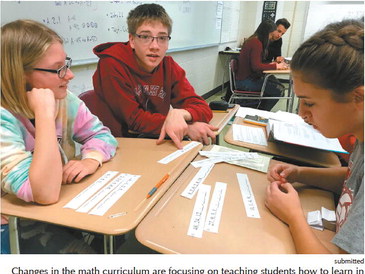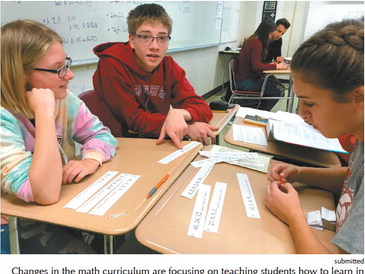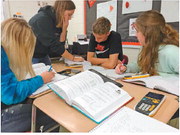Just because kids don’t like it, doesn’t mean it’s not good for them


There are many things that my parents made me do as a kid that I didn’t want to do: make my bed, wash dishes, stack firewood, to name a few. As an adult, I can see the value of these tasks and in turn have made my children do similar chores, and guess what? They don’t like them either.
The attitude of wanting to take the least resistant path is not new. Not everyone wants to work hard but in the end, we know that hard work pays off. Therefore, in addition to teaching students how to solve math problems, we also want our kids to learn how to learn. In our math classrooms, we value mathematical understanding, skill proficiency, problem-solving, communication, justification, mastery over time, multiple ways of thinking, and effective teamwork.
That is why when you visit a high school math class today, you will immediately see a difference. Students sit in collaborative teams and are encouraged to communicate their ideas and work together to solve challenging problems because we want our students to take ownership of their learning and take part in meaningful math discussions.
Teachers teach the math, but it may not look the same as what we are used to seeing. Instead of lecturing to 25 students at one time hoping they absorb it, teachers break down the lesson and teach each team individually, making sure they are learning the material, and being more available when students get frustrated.
Instead of assigning the odds or evens of the same type of problem 30 times, our students work on mixed-based homework problems. Mixed-based practice helps keep all of the skills students have learned fresh in their minds so that students improve their individual skills on a daily basis.
So, why the change? Business and industry have spoken and we have listened. Very few, if any, employers have jobs where their employees work alone. Therefore, we need to teach our students to work together to solve problems. Another reason is that although traditional learning methods worked for most kids, it didn’t work for all kids. Like other professions, education needs to continually improve its techniques to ensure all kids are learning, not just the students who have a natural ability to learn math.
Although these learning methods may look different than when most of us learned math, if you look closer you’ll also find a lot is still the same. Students are still taught traditional math content, problems, and processes; it’s just the structure that has changed. We selected our new high school math program due to its rigor, alignment with state standards, and successful implementation in other high achieving school districts.
In school hard work doesn’t look like dishes, or stacking firewood, but rather it looks like working together in groups, thinking through a challenging problem and mastering a concept through frustration. And because it is hard work, students don’t always like it. However, if we get it right, we can create a generation of math students who learn the math, and learn the value of hard work, teamwork, and problem-solving.
— Laura Lundy, director of curriculum, Medford Area Public School District





